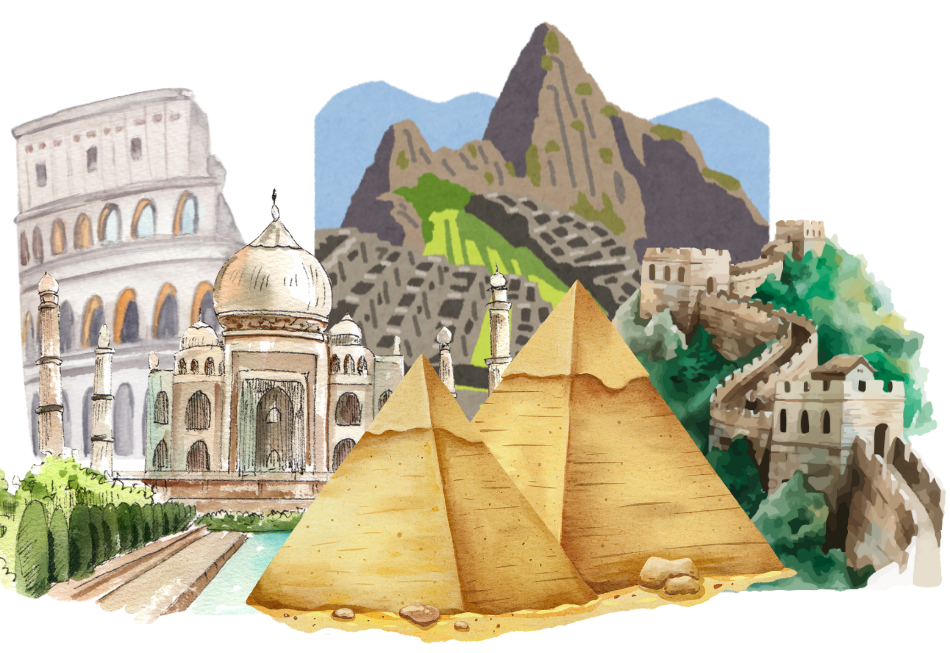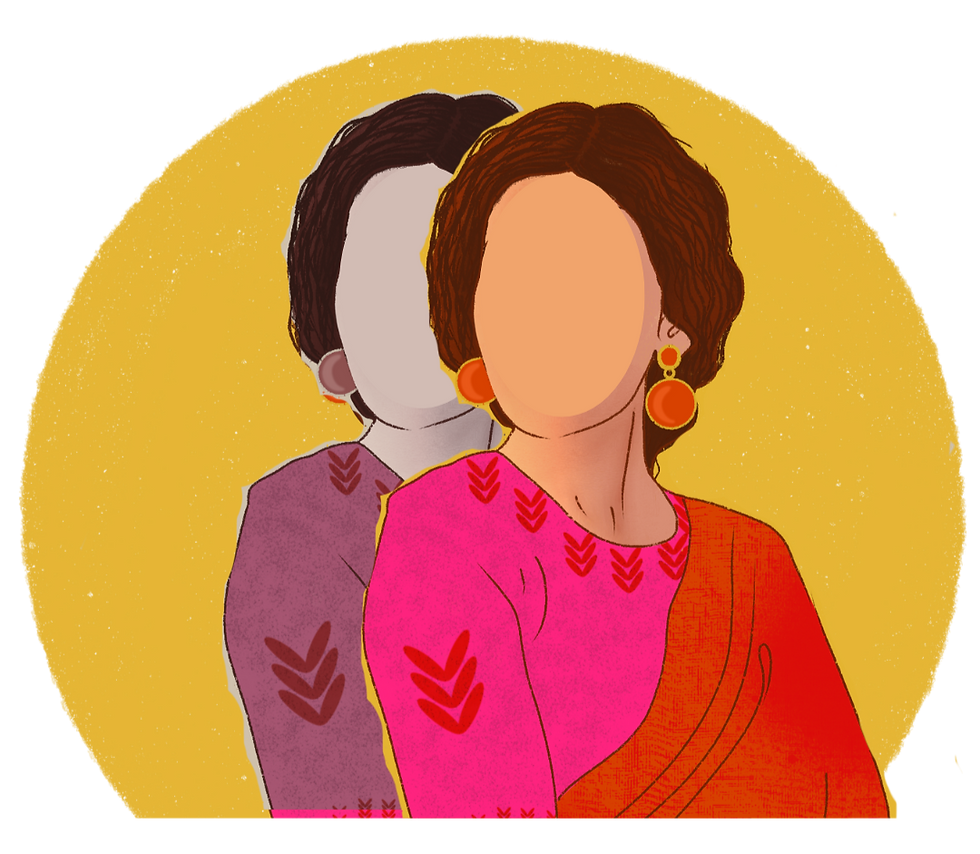Therapy went on a journey too! A look at the evolution of Therapy
- Agatsu Foundation
- Jul 31
- 5 min read
Therapy, as we know it today, has gone through a long journey. Long before scheduled appointments and formal diagnoses (and the couches!), people turned to what they had: rituals, conversations, shared spaces, and community wisdom. While those early practices looked different across regions and traditions, they were all attempts to make sense of human experiences– such as pain or joy or attachment or trauma– and find relief. Modern therapy builds on those roots — shaped by science, philosophy, and changing social needs.
What we now call “psychotherapy” is just one piece of a much larger story — one that has shifted over time, across places, and in response to different needs.
Early Forms of Healing
In earlier times, mental or emotional challenges were often understood through spiritual, social, or cultural lenses. These practices weren’t called “therapy,” but they served a similar purpose — helping people feel held, understood, and less alone.
Emotional distress was treated through practices that blended medicine, ritual, and meaning-making. In ancient Egypt (around the 20th century BCE), people sought healing in sleep temples, where priest-physicians used dream interpretation, chanting, baths, and trance to restore balance. In Mesopotamia (circa 30th to 5th century BCE), healing involved ritual incantations and spiritual cleansing to drive out unseen forces. Meanwhile, Ayurveda in India offered a holistic system using herbal remedies, massage, meditation, and diet to align mind, body, and spirit. Across cultures, healing was a shared experience — rooted in tradition, guided by belief, and deeply embedded in everyday life.

In many traditions, the idea of health included the whole person — mind, body, and spirit. Some believed that emotional distress came from an imbalance in energy, a disruption in one’s relationship to the world, or even a loss of meaning. Healing, then, might involve everything from herbal remedies and chanting to meditation or group ceremonies.
While these practices varied widely, one thing they had in common was that healing often took place in a shared space — it was often a collective experience, not just an individual one.
The Rise of Modern Therapy
By the late 19th and early 20th century, ideas about health and healing were changing — especially in Europe and North America. Around this time, medicine and science began to take a stronger hold.

A key cultural shift toward understanding mental and emotional distress through a more scientific lens began to take root during and after the Salem witch trials of 1692–93 in colonial Massachusetts. At the time, many of those accused of witchcraft (mostly women) were described as having seizures, hallucinations, or entering trance-like states. These behaviours were widely interpreted as signs of possession or supernatural influence, and many of the accused were imprisoned or executed.
Even during the trials, some public figures, including minister Cotton Mather, began expressing concern about the use of “spectral evidence,” which relied on visions, dreams, or subjective claims rather than observable facts. While his warnings weren’t widely heeded at the time, they marked an early challenge to supernatural explanations of human behaviour.

In the decades that followed, the Salem trials were revisited with growing skepticism. Physicians and scholars began to suggest that the girls’ behaviours might have been rooted in psychological or medical conditions — such as mass hysteria, trauma, or neurological illness — rather than witchcraft. This retrospective reframing helped lay the groundwork for a more empirical understanding of the mind, one that made space for natural and psychological explanations instead of purely spiritual ones.
One of the most well-known figures to formalise this shift was Sigmund Freud. In the early 20th century, Freud introduced psychoanalysis, a new method that involved sitting with a trained professional and exploring thoughts, memories, and early experiences. The idea was that by bringing unconscious conflicts into awareness, people could better understand themselves and reduce their distress.
This marked a turning point: healing the mind became something that could happen through structured conversation and with time, this practice came to be known as psychotherapy.
Development of Therapy
As psychology developed, different approaches to therapy emerged — each building on or responding to the ones before it.
Behavioural Therapy: Early behaviourists like Ivan Pavlov, Mary Cover Jones and John Watson, believed that mental health issues were largely the result of learned behaviours that could be changed. Using ideas from conditioning and learning theory, they emphasised concrete techniques, like reinforcement and exposure, to reduce symptoms.
Cognitive Therapy: Therapists began to explore not just what people did, but how they thought. This approach, known as Cognitive Behavioural Therapy (CBT), helped people notice patterns of thinking that might be contributing to their distress and taught them how to challenge or reframe those thoughts. It is one of the most widely used forms of therapy in the world.
Then came ideas of mindfulness and acceptance. Rather than changing thoughts directly, this approach focused on changing people’s relationships to their thoughts. Therapies like ACT (Acceptance and Commitment Therapy) and DBT (Dialectical Behaviour Therapy) encouraged clients to observe their thoughts without judgment, connect with their values, and take action in meaningful ways — even in the presence of difficult emotions.
Together, these developments reflect an ongoing evolution in how therapists think about change, healing, and the human experience.

A Return to the Bigger Picture
Today, ‘therapy’ is not just one thing. It includes a range of approaches — some structured and skills-based, others more open-ended and exploratory. The many different approaches of therapy are often referred to as modalities. While therapy is typically thought of as a one-on-one process, there's growing recognition of how relationships, communities, and culture also shape our mental and emotional well-being.
There is also increasing interest in integrating different traditions and perspectives. For instance, body-based practices like somatic therapy are gaining traction for how they help people reconnect with the physical experience of emotion. Mindfulness, once considered alternative, is now a core part of many evidence-based therapies. More therapists are also receiving training in culturally responsive care, acknowledging that a person’s identity, background, and lived experience deeply influence how they understand and experience mental health.
At the same time, there are efforts to make therapy more inclusive, accessible, and trauma-informed so it can support a wider range of people in more meaningful and relevant ways. New technologies, including AI-powered chat tools, mental health apps, and digital platforms, are also being developed to increase access, especially for those who may not be able to afford or reach traditional therapy. However, it's important to note that AI tools are very new and mostly not clinically validated. While they may offer some support, they aren’t a substitute for professional care.
So, What Is Therapy Today?
Therapy is a care service. Where one seeks help from a trained professional for a wide range of situations and difficulties. Patients have rights, therapists have responsibilities (and the other way around too!). There are boundaries, protocols and a collective goal to heal, discover and make meaning.

It might look like a weekly in-person session with a psychologist. Or it could take place through a virtual call or a group session. For some, therapy is a short-term space to navigate a specific concern. For others, it becomes part of a longer journey of growth, healing and self-discovery.
It is important to understand this evolution of therapy to ensure that you pick the one most suited for you as well as the one that is evidence-based.
It would be unhelpful to disregard ‘therapy’ or blindly believe in ‘therapy’ as a whole. Have we set our expectations right about what one modality offers with respect to what we are looking for? Have we gone to a skilled and competent professional? Are we reading the most recent articles or reviews on a particular modality?
The journey of therapy — from early healing practices to modern-day mental health support — is a story of adaptation. It does and will continue to reflect changing times, our response to these changes, developments in our understanding of our minds and bodies, and technology. Even today it continues to grow.







I'm so glad that this article encompasses not just the history of Therapy but also the way it can look different for everyone. To each their own!